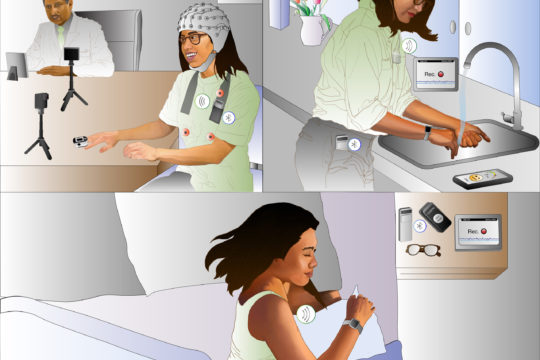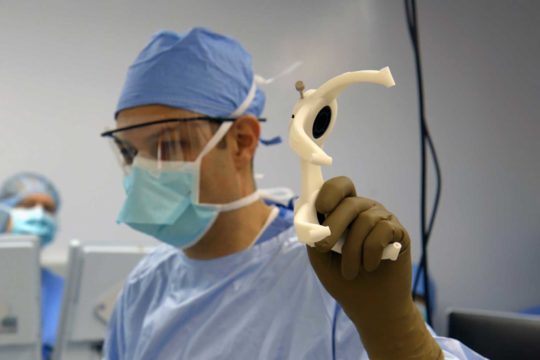Technology
Overview
What it is
For many neurosurgical procedures, precise placement of the intracranial probes and devices is essential both for safety and for optimal function. A wide variety of options is available to neurosurgeons to enable millimeter-level accuracy in these procedures, so that all that is required in most cases is a short incision and small hole in the skull through which to pass a probe directly to the desired target.
Many of the classical targeting devices (typically referred to as “stereotactic frames”) are bulky, cumbersome and, in the case of awake procedures, uncomfortable. For these reasons we often employ newer 3D-printing technology to create custom targeting platforms for each unique patient. These platforms minimize discomfort, promote safety by minimizing the need for on-the-fly intraoperative calculations and adjustments that may introduce errors, and ultimately maximize accuracy because of their rigid, one-piece construction free of moving parts.
Who can benefit
Patients undergoing a variety of stereotactic procedures (those in which a probe or device is placed precisely within a specific brain target) benefit from this technology. These include patients undergoing DBS surgery, laser ablation, depth electrode implantation and in some cases brain biopsy.
How it works
In order to create a 3D-printed targeting platform that aligns accurately to the target, a reference geometry attached to the skull is required. This reference geometry is provided by temporary fiducial screw anchors that are placed in the skull. Placement of these “fiducials” takes about 10 to 15 minutes under local anesthesia and some IV sedation. After they are placed and the skin closed above them, a CT and/or CT angiogram is obtained, and then the patient is allowed to go home.
These CT images are then aligned with a pre-operative high-resolution MRI images so that an operative plan, consisting of targets and trajectories, can be designed. The operative plan is then converted to instructions for printing the platform that will rest exactly on the fiducial anchors while providing precise guides to the targets. Once the probes and/or devices have been placed, the platform and fiducial screws are removed.
Related Conditions
Affiliated Centers and Divisions
Rhode Island Hospital
593 Eddy Street
Providence, RI 02909
401-793-9166 phone
401-444-2788 fax






